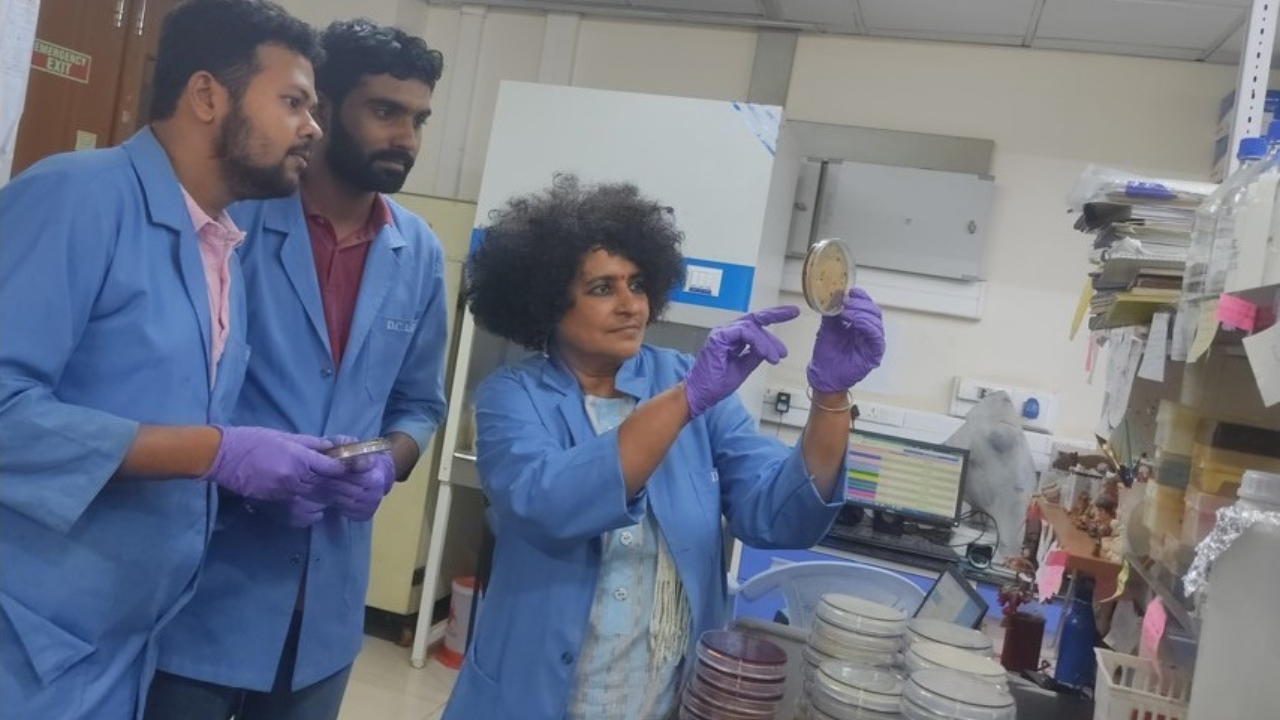Bangalore: Scientists at the Indian Institute of Science (international science academy) discovers a new way to combat the growing threat of drug resistance salmonellaare the bacteria that cause typhoid fever and other foodborne illnesses.
Their study, published in the journal Redox Biology, reveals how Salmonella exploits a key molecule called “redox biology” Spermidine To protect yourself from the body’s immune defenses, IISc said on Tuesday.
When Salmonella infects a host, it is engulfed by macrophages, which are immune cells that attempt to kill the bacteria by producing reactive oxygen and nitrogen. However, research has found that Salmonella uses spermidine to protect its proteins from this oxidative stress. Crucially, the bacterium hijacks the host’s machinery to increase spermidine production.
Dipshikha Chakravortty, professor, Department of Microbiology and Cell Biology (MCB), IISc, said spermidine from bacteria and the host acts like a powerful weapon for Salmonella against reactive oxygen species.
“Salmonella’s survival strategies are remarkable. As antibiotic resistance increases in Salmonella, eradication is simply impossible,” Chakravortty added.
Researchers found that the existing FDA-approved drug D,L-α-difluoromethylornithine (DFMO) can reduce spermidine levels in the host by blocking key enzymes involved in its synthesis pathway. Mouse experiments show DFMO Makes mice more resistant to salmonella infection.
Abhilash Vijay Nair, first author of the study, said: “Since we are targeting the host machine and not the bacteria directly, it does not evolve resistance through genetic evolution.”
The researchers plan further studies to identify other targets for disrupting spermidine production.
Their study, published in the journal Redox Biology, reveals how Salmonella exploits a key molecule called “redox biology” Spermidine To protect yourself from the body’s immune defenses, IISc said on Tuesday.
When Salmonella infects a host, it is engulfed by macrophages, which are immune cells that attempt to kill the bacteria by producing reactive oxygen and nitrogen. However, research has found that Salmonella uses spermidine to protect its proteins from this oxidative stress. Crucially, the bacterium hijacks the host’s machinery to increase spermidine production.
Dipshikha Chakravortty, professor, Department of Microbiology and Cell Biology (MCB), IISc, said spermidine from bacteria and the host acts like a powerful weapon for Salmonella against reactive oxygen species.
“Salmonella’s survival strategies are remarkable. As antibiotic resistance increases in Salmonella, eradication is simply impossible,” Chakravortty added.
Researchers found that the existing FDA-approved drug D,L-α-difluoromethylornithine (DFMO) can reduce spermidine levels in the host by blocking key enzymes involved in its synthesis pathway. Mouse experiments show DFMO Makes mice more resistant to salmonella infection.
Abhilash Vijay Nair, first author of the study, said: “Since we are targeting the host machine and not the bacteria directly, it does not evolve resistance through genetic evolution.”
The researchers plan further studies to identify other targets for disrupting spermidine production.








